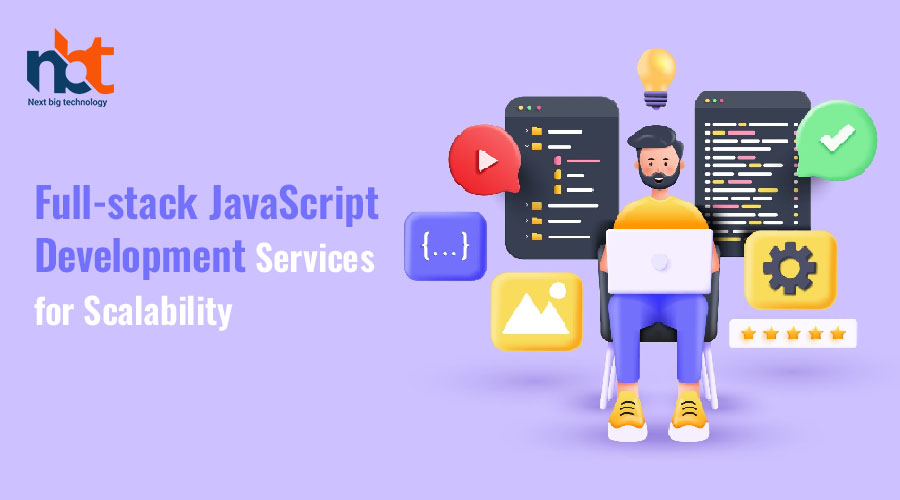Table of Contents
Introduction
In the dynamic landscape of web development, achieving scalability is a crucial aspect that directly impacts the success of an application. Full-stack JavaScript development has emerged as a powerful solution, offering a unified language for both frontend and backend components. This article explores the ins and outs of Full-stack JavaScript development services, focusing on scalability as a key element.
Advantages of Full-stack JavaScript Development
Unified Language
One of the primary advantages of Full-stack JavaScript is the use of a single programming language, allowing developers to seamlessly transition between frontend and backend tasks. This unified approach enhances collaboration and streamlines the development process.
Efficiency and Speed
With Full-stack JavaScript, developers can build applications more efficiently and quickly. The ability to share code between the frontend and backend reduces redundancy, resulting in faster development cycles and quicker time-to-market for products.
Code Reusability
Full-stack JavaScript promotes code reusability, allowing developers to leverage existing code for different parts of the application. This not only speeds up development but also ensures consistency and reduces the chances of errors.
Key Technologies in Full-stack JavaScript Development
Node.js
Node.js, with its non-blocking, event-driven architecture, plays a pivotal role in Full-stack JavaScript development. It enables scalable backend solutions, handling concurrent connections efficiently.
Express.js
Express.js, a minimal and flexible Node.js web application framework, complements Full-stack development by simplifying the creation of robust and scalable web applications.
React.js
On the frontend, React.js is a popular library for building user interfaces. Its component-based structure enhances code organization and facilitates the development of interactive and scalable user interfaces.
MongoDB
As a NoSQL database, MongoDB provides flexibility and scalability for data storage. Its ability to handle large amounts of unstructured data makes it a preferred choice for Full-stack JavaScript development.
Building Scalable Applications
Understanding Scalability
Scalability refers to a system’s ability to handle increased loads without sacrificing performance. In Full-stack JavaScript development, understanding scalability is crucial for building applications that can grow with user demand.
Importance of Scalable Solutions
Scalable solutions ensure that an application can handle growth without compromising on user experience. This is particularly important in today’s competitive digital landscape, where user expectations are high.
Scaling Frontend Development
React.js for User Interface
The use of React.js in frontend development allows for the creation of dynamic and responsive user interfaces. Optimizing React components enhances the overall user experience, contributing to the scalability of the application.
Optimizing User Experience
Scalability is not just about handling increased traffic; it’s also about providing a seamless user experience. Optimizing the user interface and ensuring smooth interactions are essential components of scalable frontend development.
Backend Scalability with Node.js and Express.js
Handling Increased Traffic
Node.js and Express.js work in tandem to handle increased traffic by efficiently managing concurrent connections. This makes Full-stack JavaScript applications well-suited for scaling backend operations.
Load Balancing
Implementing load balancing techniques further enhances backend scalability. Distributing incoming traffic across multiple servers ensures that no single server bears the entire load, improving overall performance.
Database Management for Scalability
MongoDB as a NoSQL Database
MongoDB’s NoSQL nature allows for flexible and scalable data storage. Its ability to handle large volumes of unstructured data makes it a reliable choice for Full-stack JavaScript applications dealing with diverse data types.
Scaling Data Storage
As applications grow, so does the volume of data they handle. MongoDB’s horizontal scaling capabilities enable the distribution of data across multiple servers, ensuring efficient storage and retrieval of information.
Ensuring Security in Full-stack Development
Best Practices for Security
While scalability is a priority, it should not come at the expense of security. Implementing best practices, such as secure coding and regular security audits, is crucial for building scalable applications that prioritize user data protection.
Protecting Against Cyber Threats
Scalable applications often attract attention, making them potential targets for cyber threats. Robust security measures, including encryption and firewalls, are essential to protect against unauthorized access and data breaches.
Case Studies of Scalable Applications
Real-world Examples
Examining real-world examples of scalable Full-stack JavaScript applications provides insights into successful implementation strategies. Case studies showcase how scalability contributes to the overall success of these applications.
Success Stories
Success stories highlight the impact of Full-stack JavaScript development on businesses. Companies that embraced scalability in their applications have experienced sustained growth and user satisfaction.
Challenges in Full-stack JavaScript Development
Common Pitfalls
Despite its advantages, Full-stack JavaScript development comes with challenges. Common pitfalls include performance bottlenecks, version compatibility issues, and the need for continuous learning to keep up with evolving technologies.
Solutions to Overcome Challenges
Addressing challenges requires a proactive approach. Developers can overcome common pitfalls by staying updated on the latest technologies, adopting best practices, and actively participating in the vibrant Full-stack JavaScript community.
Future Trends in Full-stack Development
Emerging Technologies
The future of Full-stack JavaScript development holds exciting possibilities with emerging technologies such as serverless architecture, GraphQL, and Progressive Web Apps (PWAs). Staying abreast of these trends is key to building future-proof applications.
Industry Predictions
Experts predict a continued rise in demand for Full-stack JavaScript developers. As technology evolves, businesses will increasingly rely on versatile developers who can navigate both frontend and backend development seamlessly.
Hiring Full-stack JavaScript Developers
Key Skills to Look For
When hiring Full-stack JavaScript developers, look for a combination of frontend and backend skills. Proficiency in technologies like React.js, Node.js, and MongoDB is essential, along with a strong problem-solving mindset.
Interview Tips
Conducting effective interviews involves assessing not only technical skills but also the ability to collaborate, adapt, and solve real-world challenges. Practical coding assessments and scenario-based questions can provide valuable insights into a candidate’s capabilities.
Client Testimonials
Experiences with Full-stack JavaScript Development
Client testimonials offer firsthand accounts of the impact of Full-stack JavaScript development services. Positive experiences underscore the reliability and effectiveness of scalable applications built using this technology.
Conclusion
In the ever-evolving world of web development, Full-stack JavaScript development stands out as a robust solution for scalability. From unified language to efficient backend handling and scalable database management, the advantages are numerous. Embracing Full-stack JavaScript ensures that applications not only meet current demands but also have the flexibility to adapt to future challenges.
Thanks for reading our post “Full-stack JavaScript Development Services for Scalability”. Please connect with us to know more about Full-stack JavaScript Development.





















